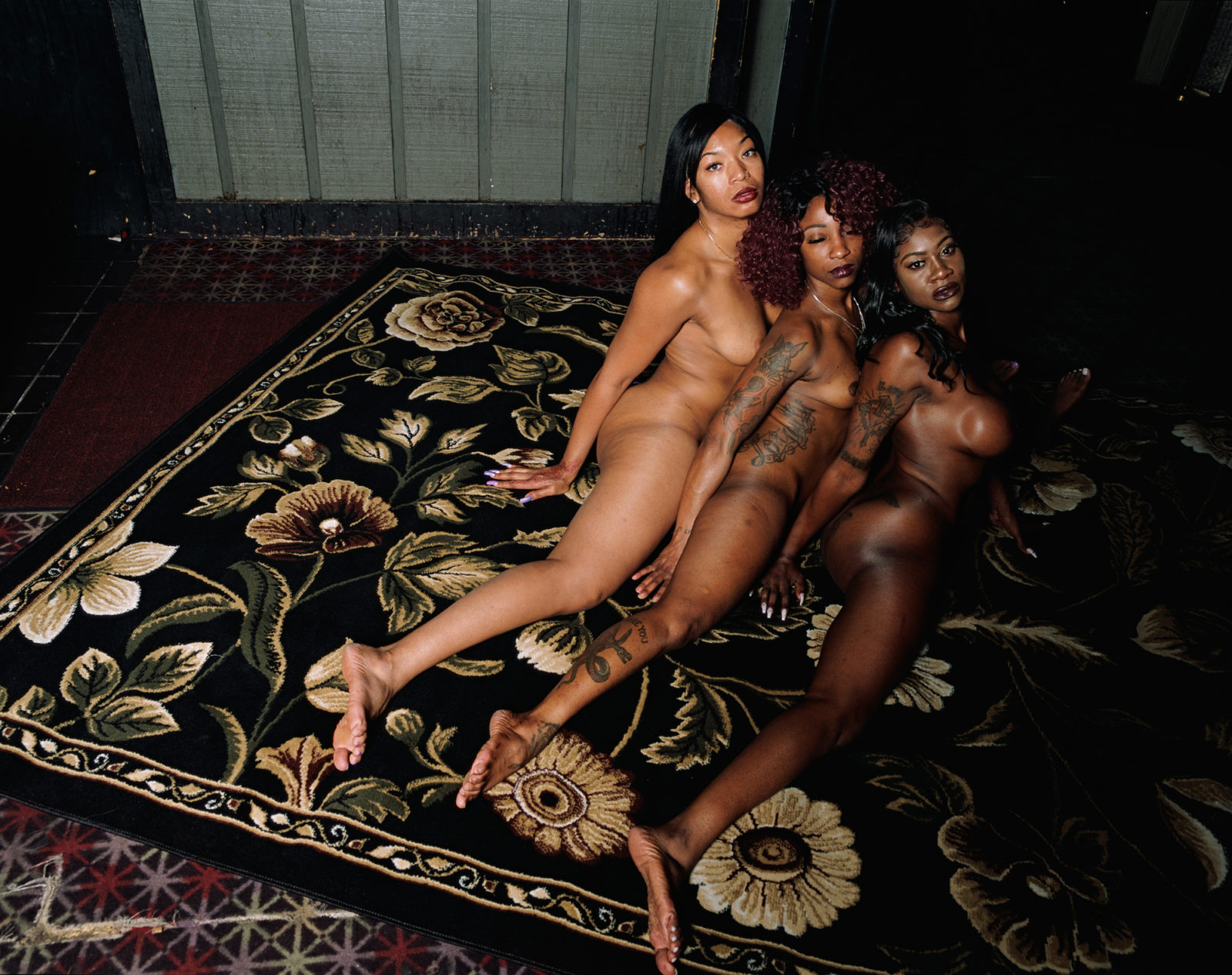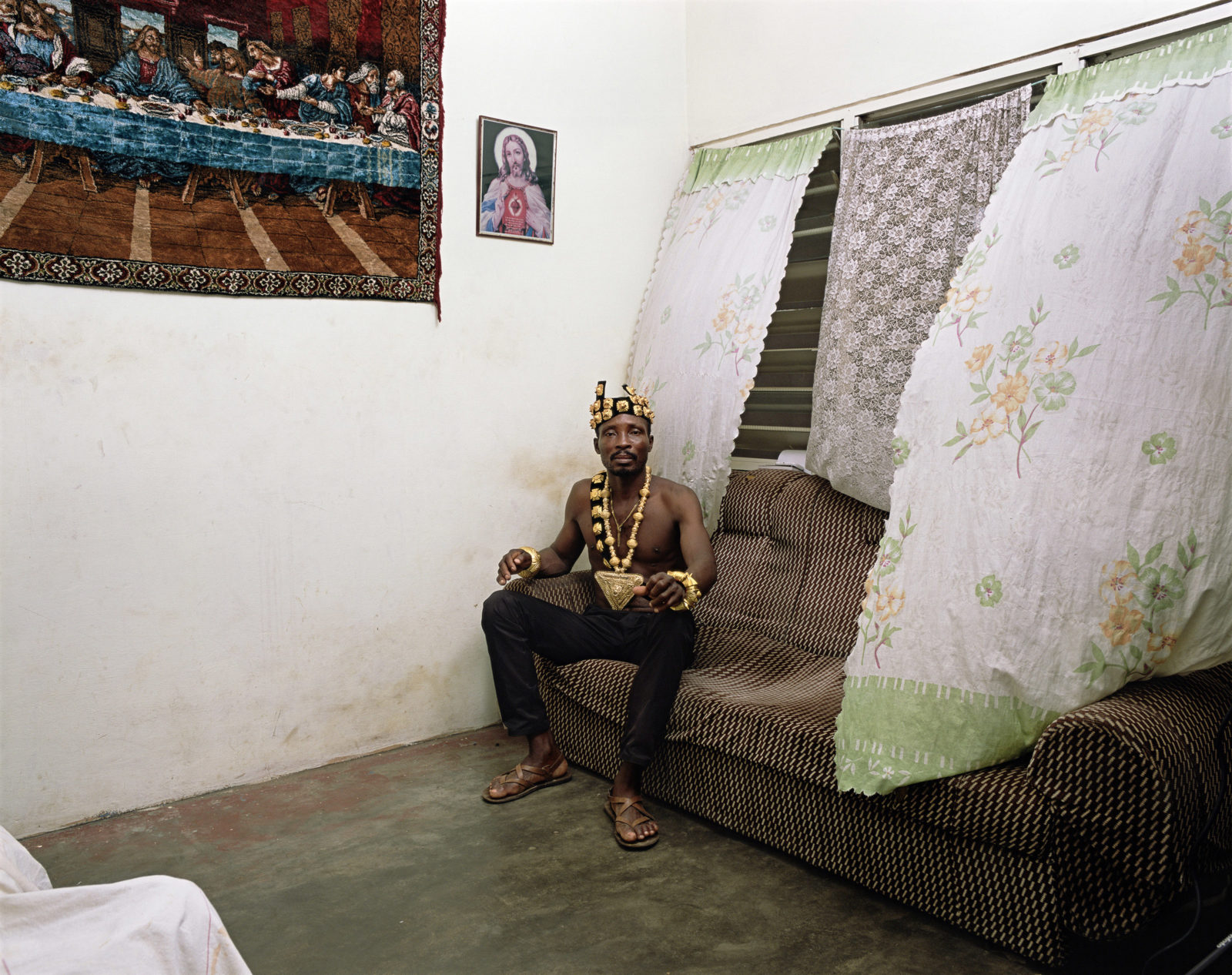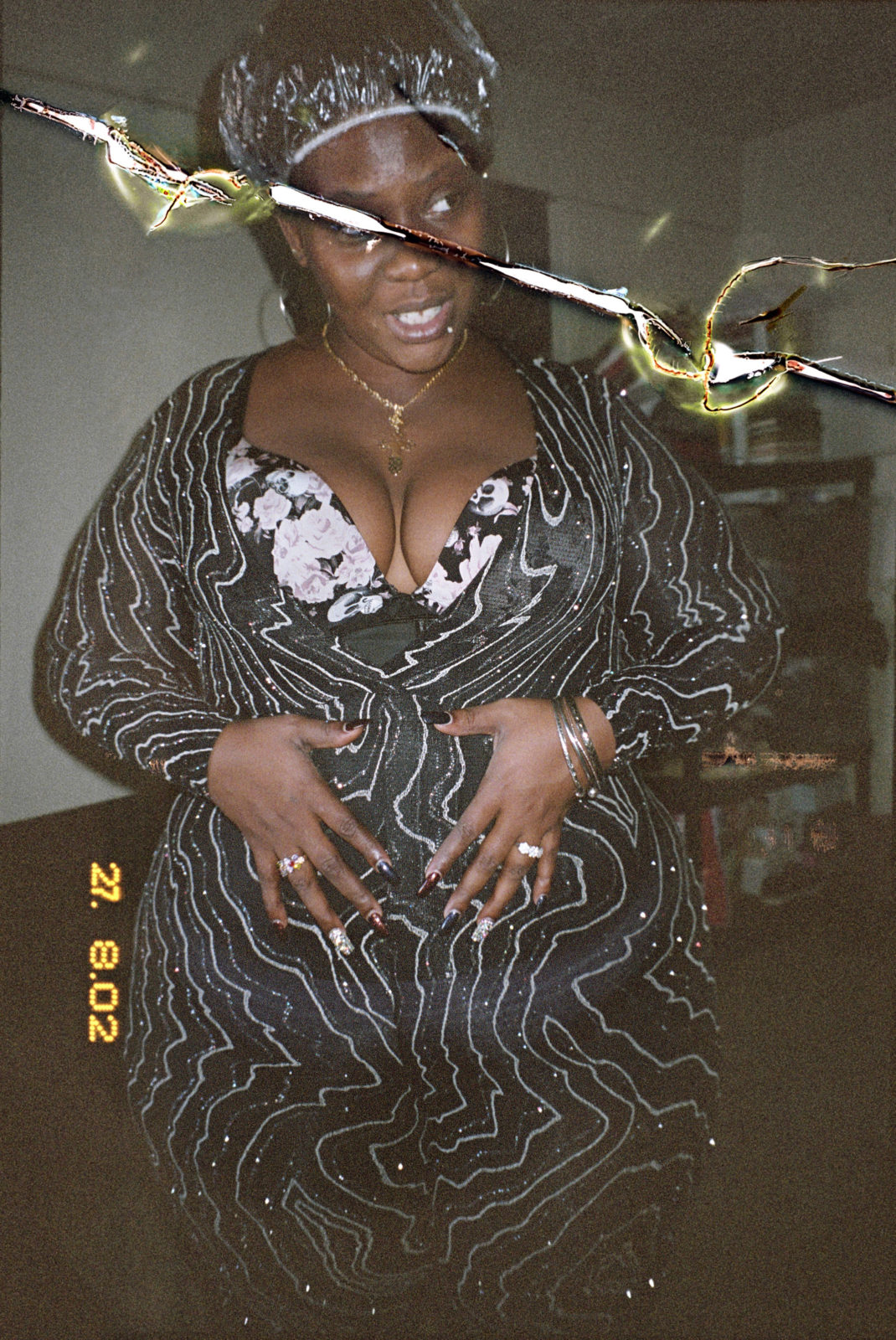Centropy: Deana Lawson // Kunsthalle Basel
by Brit Barton

Deana Lawson’s Centropy at Kunsthalle Basel opened in June 2020 in conjunction with the Fundação Bienal de São Paulo. Although the exhibition is met with an inevitable upper-class Swiss and European audience—as opposed to what would have been the jet-set crowd of Art Basel’s returning June vernissage—at the precariousness of the worldwide COVID-19 outbreak, Lawson masterfully layers the material form of photography. Provoking the object itself, alongside histories of Western oppression, Lawson locates a profound sensitivity to her subjects and their environs in Centropy. Yet, the harsh glare of the current climate is omnipresent—an unsettling reality given that the exhibition had been planned over a year in advance. The subject matter remains just as timely.
How to describe the few last months of the United States? How to describe the state of the world before then? Between the murder of George Floyd on May 25, 2020, and the public opening of Centropy on June 9, a tidal wave of heartbreak, political action, and self-examination ensued. Basel, along with most metropolitan cities within Europe, had witnessed the first of several Black Lives Matter protests from afar, which seemed to bewilder the society; the country seemed to simultaneously be asking, confirming, or denying to itself—are we racist?1
The main exhibition room within the Kunsthalle Basel consists of sixteen photographic images of varying sizes, with the four largest strategically placed as you enter and exit the room. Every image, embedded with references to the African Diaspora, is placed inside of a slick, thick, mirrored frame. The width of the frame reflects a fragmented dichotomy—the viewer, as well as another of Lawson’s photographs often situated opposite. Viewers are surrounded by images that while being looked at, look back at you.
Although Lawson is not a stranger to the eroticism that her subjects bring—nude or topless, opened postured, with child, slightly smirking, or giving a side glance—there is a persistent and controlled exoticism. Centropy is both the largest institutional display of her work to date, and the artist’s first showing in Switzerland. Lawson’s masterful photographs and coy poetics present an uncanny to all, but perhaps glaringly more so now, to those who may have only ever seen her aesthetic in movies.

One of the curious treatments within the exhibition is the subtext of waterfalls and their metaphors. The meaning is double-sided; it is inescapable in any review to leave the fact that Lawson comes from Rochester, New York (headquarters to the Kodak Eastman) unmentioned, but also that Rochester lies along the natural border between the United States and Canada adjacent to Niagara Falls. The most obvious notation is Niagara Falls (2018), an ironically small scaled image that comes in nearing a quarter of the size to the largest image framed, but the most tender reference is found within the image next to it.
In Taneisha’s Gravity (2019), above a seated, catatonic-like figure, are two framed prints inexplicably warped and perhaps collaged onto the wall after the fact, in the post-production of the image. The resemblance is something of a simple landscape and a waterfall, but also point to paintings from the Hudson River School; a 19th-century movement based in New York state, which encapsulated the Romantic ideals of European colonization in the Americas.
Down the bright long hall of the galleries, a pair of small dark rooms display a series of intimate video works that feel more like a time capsule. Upon entering, the automatic start-up of a 16-millimeter machine begins to play, and it is loud. In a way, it is a call-back: familiar characters from within Teneisha’s Gravity (2019) return in the looping films Fragment (church) (working title) (2020), and Untitled (working title) (2018). Both films are silent, and any sounds one can imagine are eclipsed by the foreign sounds of multiple analog machines. This show within a show removes the meditative experience of looking at photographs while you become inhabited by the haptics. The unassuming work Boom Box Hologram (2020) is the perfect example of this. The viewer must move close or aside to fully realize the image—a boombox, broken apart, wrapped multiple times in clear shipping tape, and covered with price stickers of $50.00.
It is unclear to me if the idea of this object—an obvious artifact of a second-hand shop shelf—has ever existed on the rich Swiss soil. Moreover, can the symbolism of a boombox not as something that plays music, but as something so intrinsic to the African diaspora, particularly African Americans coming of age in the 1980s and ‘90s, be distilled into an image? This silent, inconspicuous hologram encompasses what this exhibition at the present moment has become.

In the avalanche of good will gestures from allies of all ethnicities—some performative and some not—comes the standard movie recommendation of “Do the Right Thing,” Spike Lee’s 1989 masterwork.2Though, to suggest that this film is prescient is to deny the centuries of police brutality and systemic racism of the black community in Western society. Nevertheless, it is a must-watch. Street philosopher Radio Raheem walks around the Bedford–Stuyvesant setting with a boombox blaring Public Enemy’s “Fight The Power.” The sight and sound of Radio Raheem is memorialized by his famous soliloquy; a breakdown of the real and inherited racial angst of belonging, identity, property, and the violence of being a Black person in a white world. With gold plated knuckle rings on both hands, the right hand spelling LOVE and the left hand HATE, he fights out the origin story of man while breaking the fourth wall. Love, coming out at the end after a brutal beating, ultimately wins, in a near scene-for-scene ode to Charles Laughton’s 1955 thriller, The Night of the Hunter. In any image of Lawson’s, care and intimacy are clear, despite the background of any assumed angst there might be.
Elsewhere on June 9, 2020, the Black Artists and Cultural Workers of Switzerland sent an open letter3 to dozens of cultural institutions throughout the country, including the Kunsthalle Basel. The Kunsthalle staff, including curator and director Elena Filipovic could not have anticipated the event, nor the racial unrest across the country and world, that coincided with the opening. “The open letter sent to Swiss institutions with important, urgent questions, as well as the demand to actively dismantle white supremacy and racial bias within the structure of our institution reached us on the opening day of a new exhibition of photography by Deana Lawson. This exhibition, which affirms the dignity of Black life even as it raises troubling questions about the systemic inequities that plagues people of color around the world, was over a year in the making, and its opening had to be postponed because of COVID restrictions.”4
While the letter asked for broad proof and transparency of their support beyond the rampant virtue signaling of the cultural industry, Filipovic agrees that more needs to be done than what has been appeased in the past:
“All of this is to say that our society’s grave inequalities have been something on our minds and heavy in our hearts for a while now. We are aware as well that as an institution we are absolutely not outside of them, even as we might try not to perpetuate them unquestioningly. And because we know too well that contemporary art is a mirror of society and not protected from injustice and unequal access, we are determined to continue to work dedicatedly to make our own institution better: more accountable, more accessible, more aware. The decolonization of our library has been actively pushed by our current librarian over the last years and will be an ongoing project for years to come. The team of Kunsthalle Basel collectively took part in an Anti-Racism workshop in 2018 led by the author Tupoka Ogette and because of it we have been examining and been more conscious of the precision and resonance of the terms we use to communicate what we do, which we know matters. Recently, these questions in particular prompted long discussions in relation to the way we speak about Deana Lawson’s exhibition.”
Ultimately, Centropy has entered into the canon of Kunsthalle Basel exhibitions, and were it not for the timeline it would still stand alone as an entrancing body of work in subject and technique. The artist has taken a thermodynamic term that serves as the opposite of the entropic process and gives way to a new force within her own work as a metaphorical rebirth. It is an exhibition to be reckoned with, but not because it asks the questions for us. It has fortuitously come at a time—for Basel, Switzerland, its institutions, and their audiences—when we must collectively and continually ask the questions to ourselves.
Deana Lawson: Centropy runs at Kunsthalle Basel through October 11, 2020.
- Bordier, Simon “Tausende ziehen durch Basel – und Polizisten gehen auf die Knie.” Die Basler Zeitung, June 6, 2020.
- Vinson Cunningham, “Do the Right Thing: Walking in Stereo,” The Criterion Collection, July 23, 2019.
- “An Open Letter from the Black Artists and Cultural Workers in Switzerland,” Black Artists and Cultural Workers in Switzerland, June 15, 2020.
- Official response to THE SEEN from director to author. June 25, 2020.